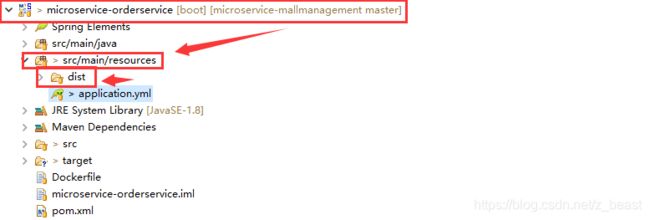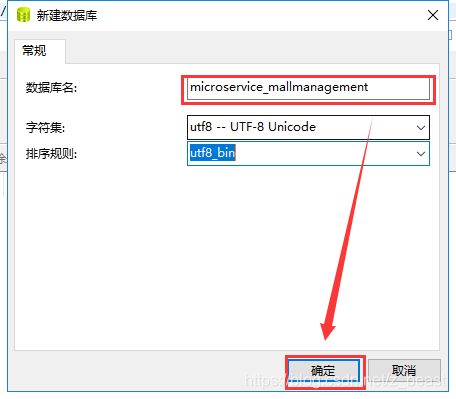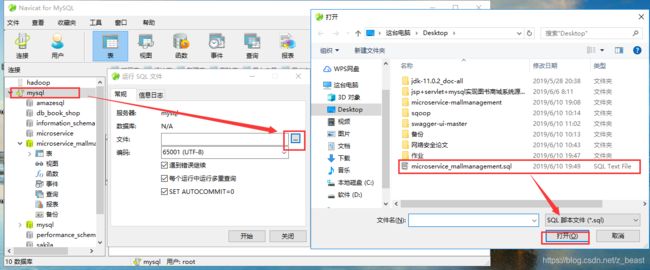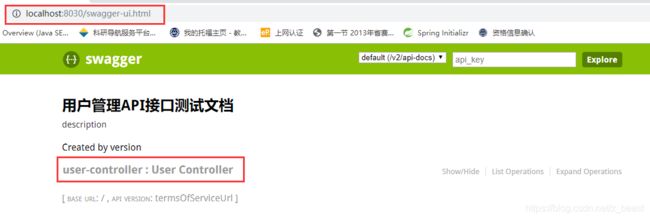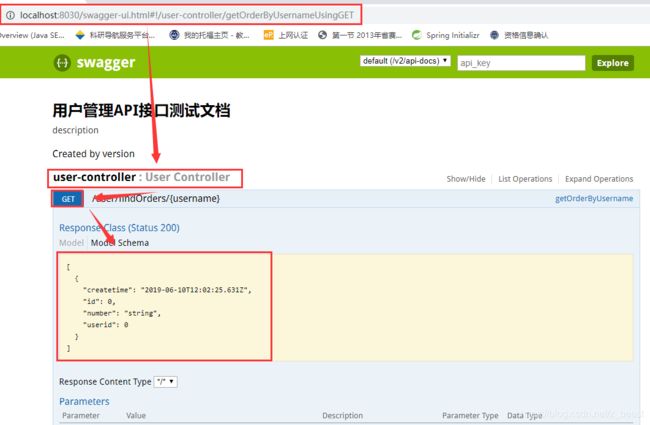- SpringCloud/Boot集成LogBack
azoon.top
springcloudlogbackspringlog4jslf4j
一.简要介绍什么是SLF4J?官网介绍:SimpleLoggingFacadeforJava(SLF4J)充当简单的各种日志记录框架的Facade或抽象(e.g.java.util.logging、logback、log4j)允许最终用户在部署时插入所需的日志记录框架。类似java中的接口,如果只集成SLF4J,日志只能输出在控制台,并没有输出到文件的能力,要实现真正的日志能力,需要引入其实现层:
- Eureka vs Zookeeper:谁才是微服务世界的“寻人启事”之王?
码农技术栈
eurekazookeeper微服务架构springcloud
引言:为什么需要“服务发现”?想象一下,你走进一家巨大的购物中心,里面有1000家店铺,但没有任何地图或指示牌。你需要找到一家奶茶店,却只能挨家挨户敲门问路——这就是没有服务发现的微服务世界。服务发现(ServiceDiscovery)就像购物中心的智能导航系统:它能自动告诉你奶茶店的位置、哪家正在营业,甚至哪家人最少。而Eureka和Zookeeper就是两套不同的“导航系统”,但它们的底层逻辑
- Eureka、Zookeeper、Nacos 三国杀:谁才是微服务“全家桶”的终极答案?
码农技术栈
eurekazookeeper微服务springcloudspringboot后端
引言:微服务世界的“三大护法”如果你在微服务领域摸爬滚打过,一定听过这三个名字:Eureka、Zookeeper、Nacos。它们看似都解决了“服务发现”问题,但背后的定位天差地别——Eureka是Netflix的“退休老干部”(已停更),主打高可用;Zookeeper是Apache的“强迫症管家”,专注强一致性;Nacos是阿里的“全能新秀”,号称“服务发现+配置管理”二合一。到底怎么选?我们通
- spring boot、spring cloud、spring cloud alibaba 之间的版本对应关系
薄荷街的兔比先生
springbootspringcloudjava
大家在引用pom的时候还是要以官方推荐版本为主,不然容易出现未知的问题。1.springboot和springcloud的版本关系官方提供的版本对照表https://start.spring.io/actuator/info{"git":{"branch":"93e528fc7e79e41a513e493d057499401a15eb67","commit":{"id":"93e528f","ti
- 【目录】PMP项目管理—基础认知篇—十五至尊图
洛北辰南
PMPPMP项目管理目录
笔者已经3A通过PMP考试,近期抽空会把上网课记录的笔记腾到博客中,以此文为目录链接全部内容,欢迎订阅关注。已整理完成基础认知篇、整合管理篇。持续更新中…知识领域启动过程组规划过程组执行过程组监控过程组收尾过程组项目整合管理4.1制定项目章程4.2制定项目管理计划4.3指导和管理项目工作4.4管理项目知识4.5监控项目工作4.6实施整体变更控制4.7结束项目或阶段项目范围管理5.1规划范围管理5.
- Java微服务的注册中心Nacos
铁锤学代码
微服务java微服务开发语言
文章目录Nacos的主要作用Nacos实现动态配置更新的技术Nacos实现CAPNacos实现CAP原理Nacos使用Distro和Raft分别干什么用?ZAB与Raft的区别Nacos的主要作用配置中心:可以将微服务中的一些配置信息放到Nacos进行统一管理,也可以通过Nacos实现动态配置管理。也可以将不同环境的配置放在不同的Namespace下的group下,实现动态选择配置发布部署。服务注
- Spring Boot 集成 Kafka
m0_74823471
面试学习路线阿里巴巴springbootkafkalinq
在现代软件开发中,分布式系统和微服务架构越来越受到关注。为了实现系统之间的异步通信和解耦,消息队列成为了一种重要的技术手段。Kafka作为一种高性能、分布式的消息队列系统,被广泛应用于各种场景。而SpringBoot作为一种流行的Java开发框架,提供了便捷的方式来构建应用程序。本文将介绍如何在SpringBoot项目中集成Kafka,包括Kafka的基本概念、SpringBoot集成Kafka的
- 【GO】学习笔记
勤不了一点
GOgolang学习笔记go
目录学习链接开发环境开发工具GVM-GO多版本部署GOPATH与go.modgo常用命令环境初始化编译与运行GDB--GNU调试器基本语法与字符类型关键字与标识符格式化占位符基本语法初始值&零值&默认值变量声明与赋值_下划线的用法字符类型const常量字符串类型转换与判断指针值类型和引用类型复杂数据类型数组:一个由固定长度的特定类型元素组成的序列切片(Slice):动态序列链表(list):没有元
- 【C++】探索Vector:灵活的数据存储解决方案
星霜旅人
C++c++
什么都无法舍弃的人,什么也改变不了。前言这是我自己学习C++的第六篇博客总结。后期我会继续把C++学习笔记开源至博客上。上一期笔记是关于C++的string类知识,没看的同学可以过去看看:【C++】代码森林中的STL宝藏工具箱---string类_c++工具箱-CSDN博客https://blog.csdn.net/hsy1603914691/article/details/143967928?s
- 1-5.WPS JS宏对象的属性、方法、集合---学习笔记
爱上妖精的尾巴
WPSJS宏编程教程学习笔记wps笔记jsjavascript开发语言学习
每个对象都有属性与方法。比如人就是一个对象,而人的手或脚就可以看做是人对象下的子对象。人的身高、体重就是属性。而人在吃、喝、拉、撒、睡就是方法(动作)。而多个对象就可以形成集合,比如一屋子人。在JS中,也是万物皆对象。比如JS中的字符串、数组、函数等都是对象。这些对象都有自己的属性与方法,后面在对应的章节中都有讲解。而在WPS表格,也有很多对象,比如WPS表格程序就是最大的对象,再比如WPS的工作
- Spring 学习笔记(一)Spring两大核心技术IOC控制反转/DI依赖注入和AOP面向切面 案例 | 优化传统的Web开发 | MVC架构DAO层与Service层之间的解耦
「已注销」
#SSMSpring
文章目录参考资料运行环境一、Spring概述1.1Spring产生背景1.2两大核心技术IOC/DI+AOP二、Spring核心技术2.1IOC/DI2.1.1案例:IOC实现解耦2.1.2IOC/DI使用总结2.2AOP2.2.1案例:AOP实现日志打印2.2.2AOP使用总结:三、总结参考资料SPOC运行环境windows10IDEA2021.1专业版JDK8Spring-5.0.5一、Spr
- 人工智能算法安全优化实践路径
智能计算研究中心
其他
内容概要在人工智能技术深度融入产业实践的进程中,算法安全优化已成为保障系统可靠性与社会信任的核心命题。本文系统性梳理从数据预处理到模型落地的全流程安全实践路径,聚焦金融风控、医疗影像诊断、自动驾驶等关键场景,揭示算法开发中潜藏的伦理风险与技术挑战。通过整合自动化机器学习与联邦学习技术,构建跨数据孤岛的协作框架,同时引入可解释性算法增强模型透明度,确保决策逻辑可追溯、可验证。在模型优化维度,重点解析
- 【数据仓库】数仓分层设计
数据仓库数据分析
一、为何分层?随着信息技术的快速发展,传统数据库已经无法存储和处理海量的数据,数据仓库应运而生。官方说明:数据仓库是用于支持企业决策制定和分析,它通过将不同来源的数据整合在一起,为用户提供一致、全面且易于访问的数据视图。可以简单理解为数据仓库就是专门用来存储和分析海量的历史数据,让数据真正地产生价值,为企业赋能。之前看到过一句话说的很不错,数据仓库的第一性原理是什么?就是以通过整合、优化和管理数据
- 分布式服务发现与注册中心 Consul
要加油呀
中间件java-consulconsuljava
分布式服务发现与注册中心Consulgithub地址:https://github.com/consul/consul基础概念什么是注册中心随着微服务理论发展的成熟,越来越多互联网公司采用微服务架构来支持业务发展。各个微服务之间都需要通过注册中心来实现自动化的注册和发现。注册中心主要有三种角色:服务提供者(RPCServer):在启动时,向Registry注册自身服务,并向Registry定期发送
- 分布式系统架构设计原理与实战:理解分布式系统的基本概念
AI天才研究院
计算大数据人工智能语言模型AILLMJavaPython架构设计AgentRPA
1.背景介绍在当今的互联网时代,数据量的爆炸性增长和业务的快速发展,使得单一的计算机系统已经无法满足我们的需求。为了解决这个问题,分布式系统应运而生。分布式系统是一种能在多台计算机(也称为节点)上运行,并通过网络进行通信和协调的系统。它能够提供高可用性、高可靠性、高扩展性和高性能等特性,因此在云计算、大数据、微服务等领域得到了广泛的应用。然而,设计和实现一个分布式系统并不是一件容易的事情。它涉及到
- 【Java 面试 八股文】Spring Cloud 篇
落啦啦
javajava面试springcloud
SpringCloud篇1.SpringCloud5大组件有哪些?2.服务注册和发现是什么意思?SpringCloud如何实现服务注册发现?3.我看你之前也用过nacos,你能说下nacos与eureka的区别?4.你们项目负载均衡如何实现的?5.Ribbon负载均衡策略有哪些?6.如果想自定义负载均衡策略如何实现?7.什么是服务雪崩,怎么解决这个问题?8.你们的微服务是怎么监控的?9.你们项目中
- 数据湖构建
HaoHao_010
服务器云服务器云计算阿里云
阿里云的数据湖构建(DataLake)是一种用于存储和处理大量不同类型数据的解决方案,通常用于大数据分析和机器学习等应用场景。数据湖与传统的数据仓库不同,它能够存储结构化、半结构化和非结构化数据,支持大规模数据的整合、存储、查询和分析。阿里云提供了一整套工具和服务来帮助企业构建数据湖,以下是数据湖构建的主要步骤和关键服务:1.数据湖概述数据湖是一种统一的数据存储库,能承载来自多个来源的数据,包括:
- Spring Boot2 系列教程(三十)Spring Boot 整合 Ehcache
2401_84048290
程序员springbootjavaspring
工程创建完成后,引入Ehcache的依赖,Ehcache目前有两个版本:这里采用第二个,在pom.xml文件中,引入Ehcache依赖:org.springframework.bootspring-boot-starter-cacheorg.springframework.bootspring-boot-starter-webnet.sf.ehcacheehcache2.10.6添加Ehcache
- 分布式服务注册与发现
点滴~
面试大型网站技术架构分布式分布式
目录核心概念常见实现方式常见工具与框架优点挑战应用场景总结分布式服务注册与发现是微服务架构中的关键组件,用于动态管理服务的注册、发现和调用。它帮助服务在分布式环境中自动找到彼此,确保系统的高可用性和可扩展性。核心概念服务注册:服务启动时向注册中心注册自己的信息(如服务名、IP、端口等)。注册中心维护服务实例的元数据。服务发现:客户端或服务消费者通过注册中心查找目标服务的实例信息。支持动态获取服务的
- 【Reasoning】o1复现整合
辰阳星宇
科研论文自然语言处理语言模型深度学习人工智能
调研文章《Marco-o1:TowardsOpenReasoningModelsforOpen-EndedSolutions》arxiv:https://arxiv.org/abs/2411.14405github:https://github.com/AIDC-AI/Marco-o1Marco-o1:TowardsOpenReasoningModelsforOpen-EndedSolutions
- 工程项目管理系统源码与Spring Cloud:实现高效系统管理与二次开发
微服务技术分享
springcloudjava企业工程管理系统源码工程项目管理系统源码工程管理系统源码
随着企业规模的不断扩大和业务的快速发展,传统的工程项目管理方式已经无法满足现代企业的需求。为了提高工程管理效率、减轻劳动强度、提高信息处理速度和准确性,企业需要借助先进的数字化技术进行转型。本文将介绍一款采用SpringCloud+SpringBoot+Mybatis技术框架的工程项目管理系统,该系统涵盖了项目管理、合同管理、预警管理、竣工管理、质量管理等多个方面,通过数据字典、编码管理、用户管理
- Go语言学习笔记(三)
正在绘制中
Go语言学习之路golang学习笔记
文章目录十一、结构体匿名结构体匿名字段十二、方法接收器十三、接口接口实现条件空接口类型断言十四、IO操作Reader文件操作相关APIWriterbufioioutil工具包综合示例十五、包和gomod包包的引用格式gomod十一、结构体Go语言可以通过自定义的方式形成新的类型,结构体就是这些类型中的一种复合类型,结构体是由零个或多个任意类型的值聚合成的实体,每个值都可以称为结构体的成员。结构体成
- 大语言模型:数据分析报告自动化的未来趋势
theskylife
个人随笔数据分析语言模型数据分析自动化人工智能大语言模型
目录写在开头1.数据分析报告的传统挑战时间消耗技术壁垒错误风险可扩展性问题更新频率限制用户交互和定制化不足整合新技术的挑战2.大语言模型在报告生成中的作用自动化文本生成增强准确性和丰富性实时数据处理能力提高可访问性和用户交互3.一种实现的思路3.1.明确目标与设定任务3.2.数据准备3.3.使用大语言模型生成初步内容3.4.内容整合与优化3.5.数据可视化3.6.报告完善与发布3.7实际应用中的关
- Python学习_很好的学习笔记自用
百年渔翁_肯肯
测试开发
Onthispage...(hide)1. 基本安装2. Python文档2.1 推荐资源站点2.2 其他参考资料2.3 代码示例3. 常用工具3.1 PythonIDE3.2 内置类库使用参考3.3
- springboot+dubbo+zookeeper搭建微服务框架基础
2401_89285764
java-zookeeperspringbootdubbo
org.apache.maven.pluginsmaven-compiler-plugin${java.version}${java.version}UTF-8org.apache.maven.pluginsmaven-resources-pluginUTF-8parent父工程到这里就可以不动他了,如果你的子模块有变动再更新三、创建common模块对parent项目创建cmmon子模块,comm
- 从阿里云EDM到美团云:典型微服务治理平台的实战经验分享
码农老起
微服务架构云原生
目录一.阿里云EDM(EnterpriseDistributedApplicationService)二.腾讯云TSF(TencentServiceFramework)三.华为云FusionStage四.京东云JDC(JDCloudMicroservicePlatform)五.百度智能云CloudStack六.字节跳动Tinker七.小米云平台八.美团云服务平台随着微服务架构的广泛应用,微服务治理
- Sui 通过 SCION 推进网络安全与性能
Sui_Network
Sui科普文章web安全安全游戏人工智能大数据dreamweaver去中心化
Sui正在整合SCION,以增强网络安全性、可靠性和性能。SCION的下一代互联网架构将改善Sui验证节点之间的通信,减少BGP劫持等漏洞,并确保操作不中断,为Sui的基础设施提供更具弹性的基础。SCION(即下一代网络的可扩展性、控制和隔离)是一种从零开始开发的互联网架构,旨在提供路由控制、故障隔离和明确的信任信息,以支持端到端的通信。与传统的互联网协议不同,SCION提供了路径感知网络,允许实
- 微服务架构与传统的单体架构有什么区别?微服务架构(Spring Cloud + Maven)强在哪?
瑞金彭于晏
架构微服务springcloud
微服务架构与传统的单体架构(SpringBoot+Maven项目)在设计和实现上有显著差异,主要体现在系统拆分方式、部署模式、技术栈选择、维护成本等方面。以下是具体对比:1.架构设计维度单体架构微服务架构系统拆分所有功能模块集中在一个项目中(单进程、单代码库)。按业务功能拆分为多个独立服务(每个服务是一个独立进程、独立代码库)。模块化通过Maven多模块管理代码,但最终打包为一个JAR/WAR。每
- iOS音视频:OpenGL常用术语介绍
【零声教育】音视频开发进阶
音视频开发编程程序员ios音视频xcodeC++c++
1、前言【iOS音视频】是个系列,里面会记录一些博主在iOS音视频方面的学习笔记、踩到的坑,以便温故而知新。此系列文章包括但不限于:iOS音视频:OpenGL常用术语介绍...本文是这个系列的第1篇文章,主要目的是帮助大家快速了解OpenGL,下面进入正文。2、OpenGL简介2.1OpenGL是什么OpenGL(OpenGraphicsLibrary,译为开放图形库或开放式图形库):是用于渲染2
- Kubernetes 从入门到精通:解锁容器编排的终极指南 [特殊字符]
a小胡哦
kubernetes容器云原生
为什么需要Kubernetes?Kubernetes(简称K8s)是容器编排领域的王者,它能帮你:自动扩缩容:流量激增时自动扩展应用实例(HorizontalPodAutoscaler)自愈能力:崩溃的容器秒级重启,节点故障自动迁移(Self-Healing设计)服务发现:动态管理微服务通信(Service机制)存储编排:一键挂载云存储/本地磁盘(PersistentVolumes)跨环境部署:一
- 桌面上有多个球在同时运动,怎么实现球之间不交叉,即碰撞?
换个号韩国红果果
html小球碰撞
稍微想了一下,然后解决了很多bug,最后终于把它实现了。其实原理很简单。在每改变一个小球的x y坐标后,遍历整个在dom树中的其他小球,看一下它们与当前小球的距离是否小于球半径的两倍?若小于说明下一次绘制该小球(设为a)前要把他的方向变为原来相反方向(与a要碰撞的小球设为b),即假如当前小球的距离小于球半径的两倍的话,马上改变当前小球方向。那么下一次绘制也是先绘制b,再绘制a,由于a的方向已经改变
- 《高性能HTML5》读后整理的Web性能优化内容
白糖_
html5
读后感
先说说《高性能HTML5》这本书的读后感吧,个人觉得这本书前两章跟书的标题完全搭不上关系,或者说只能算是讲解了“高性能”这三个字,HTML5完全不见踪影。个人觉得作者应该首先把HTML5的大菜拿出来讲一讲,再去分析性能优化的内容,这样才会有吸引力。因为只是在线试读,没有机会看后面的内容,所以不胡乱评价了。
- [JShop]Spring MVC的RequestContextHolder使用误区
dinguangx
jeeshop商城系统jshop电商系统
在spring mvc中,为了随时都能取到当前请求的request对象,可以通过RequestContextHolder的静态方法getRequestAttributes()获取Request相关的变量,如request, response等。 在jshop中,对RequestContextHolder的
- 算法之时间复杂度
周凡杨
java算法时间复杂度效率
在
计算机科学 中,
算法 的时间复杂度是一个
函数 ,它定量描述了该算法的运行时间。这是一个关于代表算法输入值的
字符串 的长度的函数。时间复杂度常用
大O符号 表述,不包括这个函数的低阶项和首项系数。使用这种方式时,时间复杂度可被称为是
渐近 的,它考察当输入值大小趋近无穷时的情况。
这样用大写O()来体现算法时间复杂度的记法,
- Java事务处理
g21121
java
一、什么是Java事务 通常的观念认为,事务仅与数据库相关。 事务必须服从ISO/IEC所制定的ACID原则。ACID是原子性(atomicity)、一致性(consistency)、隔离性(isolation)和持久性(durability)的缩写。事务的原子性表示事务执行过程中的任何失败都将导致事务所做的任何修改失效。一致性表示当事务执行失败时,所有被该事务影响的数据都应该恢复到事务执行前的状
- Linux awk命令详解
510888780
linux
一. AWK 说明
awk是一种编程语言,用于在linux/unix下对文本和数据进行处理。数据可以来自标准输入、一个或多个文件,或其它命令的输出。它支持用户自定义函数和动态正则表达式等先进功能,是linux/unix下的一个强大编程工具。它在命令行中使用,但更多是作为脚本来使用。
awk的处理文本和数据的方式:它逐行扫描文件,从第一行到
- android permission
布衣凌宇
Permission
<uses-permission android:name="android.permission.ACCESS_CHECKIN_PROPERTIES" ></uses-permission>允许读写访问"properties"表在checkin数据库中,改值可以修改上传
<uses-permission android:na
- Oracle和谷歌Java Android官司将推迟
aijuans
javaoracle
北京时间 10 月 7 日,据国外媒体报道,Oracle 和谷歌之间一场等待已久的官司可能会推迟至 10 月 17 日以后进行,这场官司的内容是 Android 操作系统所谓的 Java 专利权之争。本案法官 William Alsup 称根据专利权专家 Florian Mueller 的预测,谷歌 Oracle 案很可能会被推迟。 该案中的第二波辩护被安排在 10 月 17 日出庭,从目前看来
- linux shell 常用命令
antlove
linuxshellcommand
grep [options] [regex] [files]
/var/root # grep -n "o" *
hello.c:1:/* This C source can be compiled with:
- Java解析XML配置数据库连接(DOM技术连接 SAX技术连接)
百合不是茶
sax技术Java解析xml文档dom技术XML配置数据库连接
XML配置数据库文件的连接其实是个很简单的问题,为什么到现在才写出来主要是昨天在网上看了别人写的,然后一直陷入其中,最后发现不能自拔 所以今天决定自己完成 ,,,,现将代码与思路贴出来供大家一起学习
XML配置数据库的连接主要技术点的博客;
JDBC编程 : JDBC连接数据库
DOM解析XML: DOM解析XML文件
SA
- underscore.js 学习(二)
bijian1013
JavaScriptunderscore
Array Functions 所有数组函数对参数对象一样适用。1.first _.first(array, [n]) 别名: head, take 返回array的第一个元素,设置了参数n,就
- plSql介绍
bijian1013
oracle数据库plsql
/*
* PL/SQL 程序设计学习笔记
* 学习plSql介绍.pdf
* 时间:2010-10-05
*/
--创建DEPT表
create table DEPT
(
DEPTNO NUMBER(10),
DNAME NVARCHAR2(255),
LOC NVARCHAR2(255)
)
delete dept;
select
- 【Nginx一】Nginx安装与总体介绍
bit1129
nginx
启动、停止、重新加载Nginx
nginx 启动Nginx服务器,不需要任何参数u
nginx -s stop 快速(强制)关系Nginx服务器
nginx -s quit 优雅的关闭Nginx服务器
nginx -s reload 重新加载Nginx服务器的配置文件
nginx -s reopen 重新打开Nginx日志文件
- spring mvc开发中浏览器兼容的奇怪问题
bitray
jqueryAjaxspringMVC浏览器上传文件
最近个人开发一个小的OA项目,属于复习阶段.使用的技术主要是spring mvc作为前端框架,mybatis作为数据库持久化技术.前台使用jquery和一些jquery的插件.
在开发到中间阶段时候发现自己好像忽略了一个小问题,整个项目一直在firefox下测试,没有在IE下测试,不确定是否会出现兼容问题.由于jquer
- Lua的io库函数列表
ronin47
lua io
1、io表调用方式:使用io表,io.open将返回指定文件的描述,并且所有的操作将围绕这个文件描述
io表同样提供三种预定义的文件描述io.stdin,io.stdout,io.stderr
2、文件句柄直接调用方式,即使用file:XXX()函数方式进行操作,其中file为io.open()返回的文件句柄
多数I/O函数调用失败时返回nil加错误信息,有些函数成功时返回nil
- java-26-左旋转字符串
bylijinnan
java
public class LeftRotateString {
/**
* Q 26 左旋转字符串
* 题目:定义字符串的左旋转操作:把字符串前面的若干个字符移动到字符串的尾部。
* 如把字符串abcdef左旋转2位得到字符串cdefab。
* 请实现字符串左旋转的函数。要求时间对长度为n的字符串操作的复杂度为O(n),辅助内存为O(1)。
*/
pu
- 《vi中的替换艺术》-linux命令五分钟系列之十一
cfyme
linux命令
vi方面的内容不知道分类到哪里好,就放到《Linux命令五分钟系列》里吧!
今天编程,关于栈的一个小例子,其间我需要把”S.”替换为”S->”(替换不包括双引号)。
其实这个不难,不过我觉得应该总结一下vi里的替换技术了,以备以后查阅。
1
所有替换方案都要在冒号“:”状态下书写。
2
如果想将abc替换为xyz,那么就这样
:s/abc/xyz/
不过要特别
- [轨道与计算]新的并行计算架构
comsci
并行计算
我在进行流程引擎循环反馈试验的过程中,发现一个有趣的事情。。。如果我们在流程图的每个节点中嵌入一个双向循环代码段,而整个流程中又充满着很多并行路由,每个并行路由中又包含着一些并行节点,那么当整个流程图开始循环反馈过程的时候,这个流程图的运行过程是否变成一个并行计算的架构呢?
- 重复执行某段代码
dai_lm
android
用handler就可以了
private Handler handler = new Handler();
private Runnable runnable = new Runnable() {
public void run() {
update();
handler.postDelayed(this, 5000);
}
};
开始计时
h
- Java实现堆栈(list实现)
datageek
数据结构——堆栈
public interface IStack<T> {
//元素出栈,并返回出栈元素
public T pop();
//元素入栈
public void push(T element);
//获取栈顶元素
public T peek();
//判断栈是否为空
public boolean isEmpty
- 四大备份MySql数据库方法及可能遇到的问题
dcj3sjt126com
DBbackup
一:通过备份王等软件进行备份前台进不去?
用备份王等软件进行备份是大多老站长的选择,这种方法方便快捷,只要上传备份软件到空间一步步操作就可以,但是许多刚接触备份王软件的客用户来说还原后会出现一个问题:因为新老空间数据库用户名和密码不统一,网站文件打包过来后因没有修改连接文件,还原数据库是好了,可是前台会提示数据库连接错误,网站从而出现打不开的情况。
解决方法:学会修改网站配置文件,大多是由co
- github做webhooks:[1]钩子触发是否成功测试
dcj3sjt126com
githubgitwebhook
转自: http://jingyan.baidu.com/article/5d6edee228c88899ebdeec47.html
github和svn一样有钩子的功能,而且更加强大。例如我做的是最常见的push操作触发的钩子操作,则每次更新之后的钩子操作记录都会在github的控制板可以看到!
工具/原料
github
方法/步骤
- ">的作用" target="_blank">JSP中的作用
蕃薯耀
JSP中<base href="<%=basePath%>">的作用
>>>>>>>>>>>>>>>>>>>>>>>>>>>>>>>>>>>
- linux下SAMBA服务安装与配置
hanqunfeng
linux
局域网使用的文件共享服务。
一.安装包:
rpm -qa | grep samba
samba-3.6.9-151.el6.x86_64
samba-common-3.6.9-151.el6.x86_64
samba-winbind-3.6.9-151.el6.x86_64
samba-client-3.6.9-151.el6.x86_64
samba-winbind-clients
- guava cache
IXHONG
cache
缓存,在我们日常开发中是必不可少的一种解决性能问题的方法。简单的说,cache 就是为了提升系统性能而开辟的一块内存空间。
缓存的主要作用是暂时在内存中保存业务系统的数据处理结果,并且等待下次访问使用。在日常开发的很多场合,由于受限于硬盘IO的性能或者我们自身业务系统的数据处理和获取可能非常费时,当我们发现我们的系统这个数据请求量很大的时候,频繁的IO和频繁的逻辑处理会导致硬盘和CPU资源的
- Query的开始--全局变量,noconflict和兼容各种js的初始化方法
kvhur
JavaScriptjquerycss
这个是整个jQuery代码的开始,里面包含了对不同环境的js进行的处理,例如普通环境,Nodejs,和requiredJs的处理方法。 还有jQuery生成$, jQuery全局变量的代码和noConflict代码详解 完整资源:
http://www.gbtags.com/gb/share/5640.htm jQuery 源码:
(
- 美国人的福利和中国人的储蓄
nannan408
今天看了篇文章,震动很大,说的是美国的福利。
美国医院的无偿入院真的是个好措施。小小的改善,对于社会是大大的信心。小孩,税费等,政府不收反补,真的体现了人文主义。
美国这么高的社会保障会不会使人变懒?答案是否定的。正因为政府解决了后顾之忧,人们才得以倾尽精力去做一些有创造力,更造福社会的事情,这竟成了美国社会思想、人
- N阶行列式计算(JAVA)
qiuwanchi
N阶行列式计算
package gaodai;
import java.util.List;
/**
* N阶行列式计算
* @author 邱万迟
*
*/
public class DeterminantCalculation {
public DeterminantCalculation(List<List<Double>> determina
- C语言算法之打渔晒网问题
qiufeihu
c算法
如果一个渔夫从2011年1月1日开始每三天打一次渔,两天晒一次网,编程实现当输入2011年1月1日以后任意一天,输出该渔夫是在打渔还是在晒网。
代码如下:
#include <stdio.h>
int leap(int a) /*自定义函数leap()用来指定输入的年份是否为闰年*/
{
if((a%4 == 0 && a%100 != 0
- XML中DOCTYPE字段的解析
wyzuomumu
xml
DTD声明始终以!DOCTYPE开头,空一格后跟着文档根元素的名称,如果是内部DTD,则再空一格出现[],在中括号中是文档类型定义的内容. 而对于外部DTD,则又分为私有DTD与公共DTD,私有DTD使用SYSTEM表示,接着是外部DTD的URL. 而公共DTD则使用PUBLIC,接着是DTD公共名称,接着是DTD的URL.
私有DTD
<!DOCTYPErootSYST


